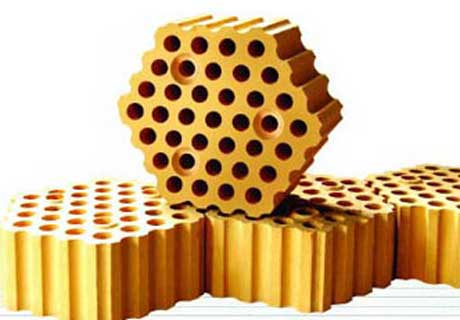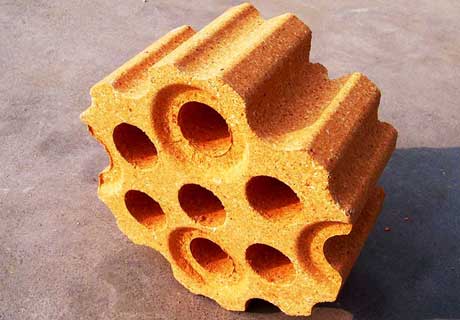Generally, refractory linings for fluidized beds can be divided into three categories according to their functions: wear-resistant materials; refractory materials; and thermal insulation materials. The refractory materials used in the existing fluidized bed include: phosphate refractory; silicon carbide refractory; corundum refractory; silicon nitride combined with silicon carbide products, etc.
Phosphate bricks are suitable for the temperature range of 1200 to 1600 ℃, and are non-burned bricks obtained by low-temperature heat treatment at 500 ℃. They have been used in cement kilns for many years, and the early circulating fluidized bed boiler linings also used this material. However, in the operating temperature range of circulating fluidized bed boilers (850-900 ℃), the performance of phosphate refractory materials is unstable and poor wear resistance. However, due to the price advantage, it has more applications in fluidized beds in the early days.

Silicon carbide refractories have excellent wear resistance and thermal shock stability. However, for the coal gasification process, its use is limited due to the slightly oxidizing atmosphere in the reactor, and the higher cost also limits the use of silicon carbide.
Aluminum silicate refractory material (Al2O3-SiO2 series), the basic chemical composition is Al2O3, SiO2. Mullite and corundum refractories are widely used in this series of refractories. Mullite has become an ideal high-grade refractory material due to its high refractoriness, creep resistance, good chemical resistance, high load softening temperature, good thermal shock resistance, good volume stability and strong electrical insulation. However, the chemical composition of mullite is unstable, including 2Al2O3·SiO2 and 3Al2O3·2SiO2. In the corundum refractory, the Al2O3 content is higher than 90% and the main crystal phase is -Al2O3. It has high thermodynamic strength, good chemical stability, thermal shock resistance and abrasion resistance, and strong resistance to reducing agents. An important raw material for advanced refractories.
Taking into account the above-mentioned material performance and price and other factors, coal gasifiers usually choose corundum as the lining refractory material, and the commonly used raw materials are white corundum, high-aluminum corundum and brown corundum.
For coal gasifiers, the selection of refractory material composition and design structure result in different resistance to coal ash corrosion of the refractory lining. The corrosion mechanism of coal ash on refractory materials is the process of reaction and erosion of coal ash minerals and refractory materials. Studies have shown that coal ash has strong corrosion resistance to high-aluminum refractories, followed by silicon carbide refractories, and corundum refractories have strong corrosion resistance.

